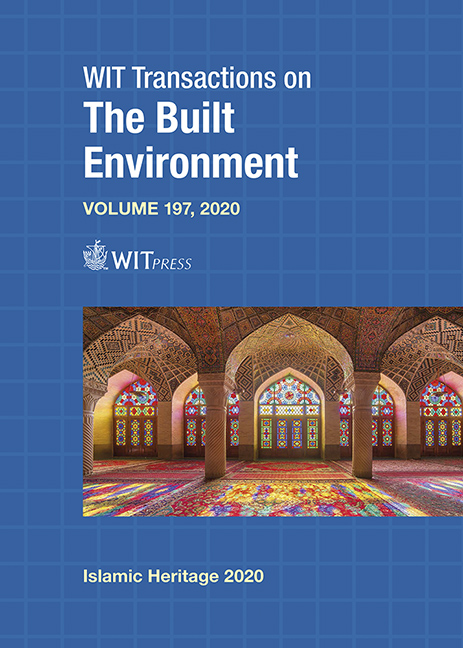SUSTAINING CULTURAL IDENTITY THROUGH ARABIC CALLIGRAPHY: A CRITICAL READING OF NASSER AL-SALEM’S ARTWORKS
Price
Free (open access)
Transaction
Volume
197
Pages
12
Page Range
211 - 222
Published
2020
Size
377 kb
Paper DOI
10.2495/IHA200181
Copyright
WIT Press
Author(s)
LINA M. KATTAN
Abstract
Arabic calligraphy has always been the most prominent characteristic of Islamic art. Arab/Muslim artists – even non-Arabic speakers – appreciate Arabic calligraphy due to its correlation with the language of the Quran. Due to the commonly known prohibition of figuration, especially among classical Muslim scholars, many Arab/Muslim artists found an escape in the Arabic alphabet to avoid such a grey area. Either used as words or as sentences, Arabic inscription became the dominant pattern of traditional Islamic art. The inclusion of Arabic letters within the artistic composition has changed over the years, namely in style. Since the 1980s, the Arabic letter became the core element of contemporary Saudi art. In this paper, I argue that contemporary Saudi artists, such as in the case of Nasser al-Salem, rely on Arabic calligraphy to assert their Islamic identity and cultural heritage. This paper sheds light on one famous contemporary Saudi artist who chose the Arabic letter as his primary approach. While it may seem that al-Salem’s contemporary works are similar to traditional Islamic arts, they tremendously differ in concept, medium, and style. This study focuses only on three of his well-known calligraphic works. Generally, what characterizes contemporary Saudi art is the high-level of conceptuality and the noticeable influence of Western art techniques. al-Salem has always been interested in the conceptuality of the Arabic alphabet and its compositional configuration; therefore, his reliance on Arabic script continues to affirm his Saudi cultural heritage and Islamic Identity. While preserving the sacredness and prominence of Arabic calligraphy, the Arabic alphabet/letter in al-Salem’s contemporary art became an autonomous form that is highly charged with symbolism.
Keywords
calligraphy, alphabet, Saudi art, contemporary Islamic art, Nasser al-Salem, cultural heritage, identity, abstraction, non-objective, conceptuality




